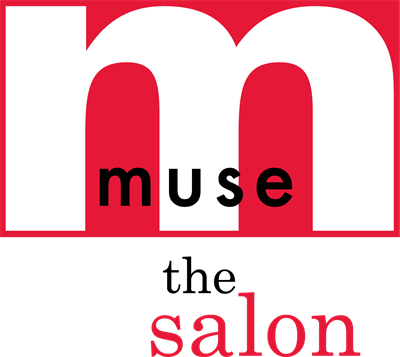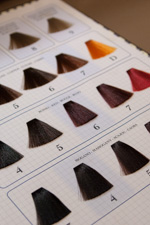Quite simply, hair coloring is both a science and an art, the art of transforming and enhancing the natural beauty of your hair.
Your natural hair color is primarily determined by hereditary factors. As scientists have shown, hair color is an inherited trait, but the wonderful thing about this genetic gift is that it can be changed or enhanced.
At Muse The Salon, we’ve been perfecting the art of color for years. Personally, I love the challenge of a color correction, though I wish it didn’t so often come with the emotional pain and cost that it can bring to a client when they end up at the wrong place or with the wrong box. That’s why I always aim to turn every coloring experience into a positive and empowering one.
If you’re thinking about coloring your hair, here are a few things you should know to help you get beautiful, lasting results and avoid unwanted surprises.
How to Choose the Most Flattering Hair Color for Your Skin Tone and Eyes
Finding your perfect shade starts with your eyes. Look closely and you’ll notice tiny flecks of color:
If those flecks are golden or yellow, your most natural match will be warm tones think honey, caramel, copper, or golden brown.
If they’re blue or bluish-black, cooler or neutral tones like ash blonde, cool brown, or jet black will beautifully complement your features.
Pro Tip: To enhance your skin tone and maintain balance, never go more than two shades lighter or darker than your natural color. This simple rule helps preserve your natural glow and prevents your color from washing you out.
Why Professional Coloring Matters
While at-home coloring kits may seem tempting, professional color services go beyond just changing the shade of your hair. A skilled stylist understands undertones, color placement, and hair health, ensuring that your new color looks vibrant, lasts longer, and keeps your hair healthy.
At Muse The Salon, we take the time to assess your hair’s condition, your skin tone, and your personal style before we even mix the color. That way, you leave the salon with a shade that truly enhances your natural beauty not just something that looks good in a box.

Before picking up a box of hair dye, take a moment to be honest with yourself about your hair type, your expectations, and your experience.
If your natural hair is a Level 1 (very dark) and you dream of becoming a Level 10 platinum blonde, skip the DIY kits. While home lightening kits and beauty supply products are widely available, using them without training is a big gamble.
Yes, some people achieve great results but many end up with orange, uneven, or damaged hair. Don’t just take my word for it — visit any beauty supply store and listen to customers talk in the color aisle, or take a look around any mall and you’ll spot a few unfortunate color mishaps!
My heart goes out to those people. Most just wanted to enhance their appearance, not harm it. But a bad color job can lower your confidence faster than anything and the results can last for months.
Remember: It costs much more to correct a bad color than it does to have it professionally done in the first place.
More Tips Before You Color
- Always do an allergy test if you’ve never used hair color before.
- Learn how to properly care for your hair after coloring — use color-safe shampoo and conditioner.
- Book a consultation before your first salon color appointment — and remember, not every hairstylist is a certified colorist.
- If coloring at home, keep it simple — avoid gimmicks and extreme transformations.


